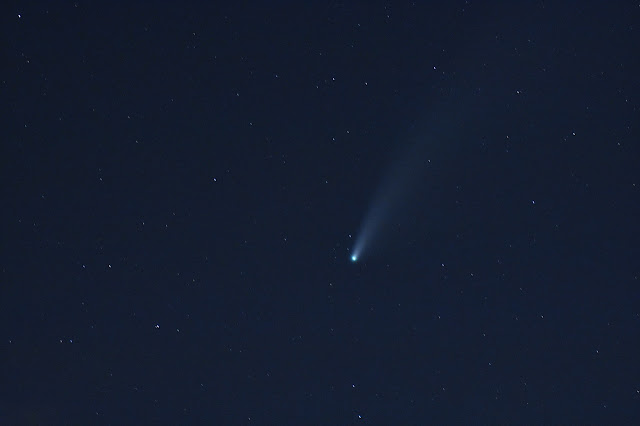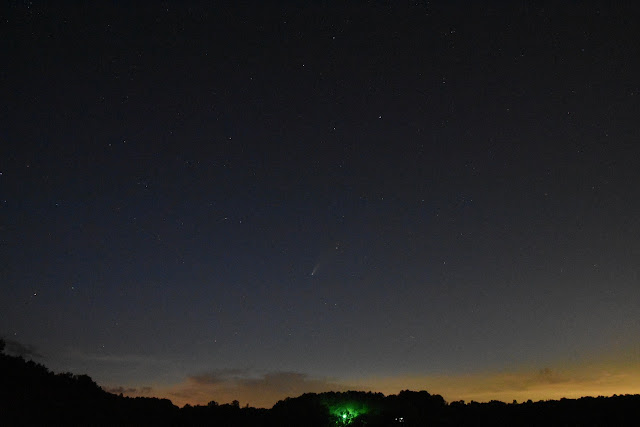Comet NEOWISE from Georgia USA
I've been out a couple of nights photographing comet NEOWISE. The first thing you need to know is that I've never actually seen it. It's just too dim. My eyes are too old. And/or because I live south of Atlanta. But I'll tell you how I photographed it (below) if you're interested.
I'm finding out I like the wider-angle photos better. I think it's the context they provide. I've shot it at 500mm (on a small sensor camera) but it really doesn't provide much more detail. (A comet is "fuzzy" after all and I'm not using any specialized astrophotography equipment so the stars start to blur with the long exposures required.)
Nikon D7200 — Nikon 200-500 F5.6 ED VR
200mm
F5.6@6 seconds
ISO 5,000
White Balance: Incandescent (That's probably a bad decision on my part. It keeps the sky a midnight "blue" but the comet's tail has a nice warm color with a "Daylight" white balance.)
So, how do you shoot something you can't see? First, you have to know where to look. Sky & Telescope has a good article on it. Then I set up my tripod with my wide angle lens and point it towards the Big Dipper (Ursa Major/North). I focus on infinity (autofocus doesn't work), crank the ISO way, way up (ISO 10,000) and take a picture. (You're going to make me post the picture aren't you? Okay. Fine. Look above the GREEN street light. Slightly left of center.)
Once you've located the comet on the camera's review screen, you center it up, zoom in a little and take another shot. (Remember, autofocus doesn't work.) Zoom in, take another shot, adjust. Rinse, lather, repeat. I know it sounds nuts but it works (if you have the time to be patient). Once you reach the end of your zoom (300mm for my 18-300mm) you lock down the tripod real tight and put on the camera with the big lens. (Or not.) I know. It's crazy but it works. (But the autofocus doesn't.)
(ROD_1475)
©Don Brown 2020



Comments